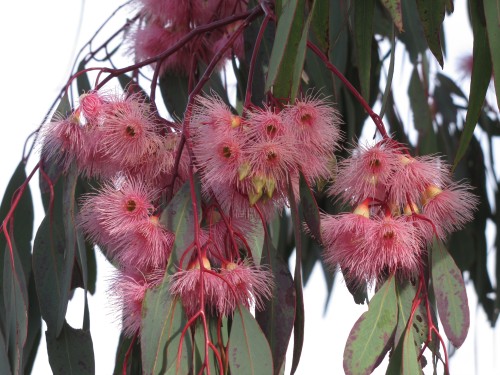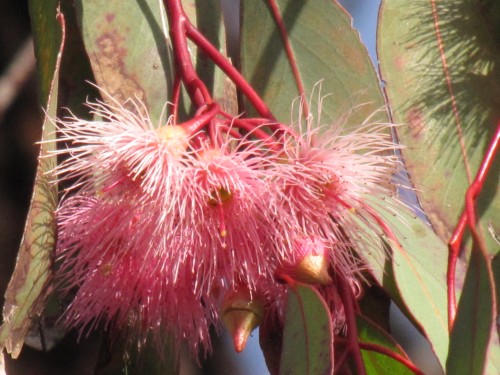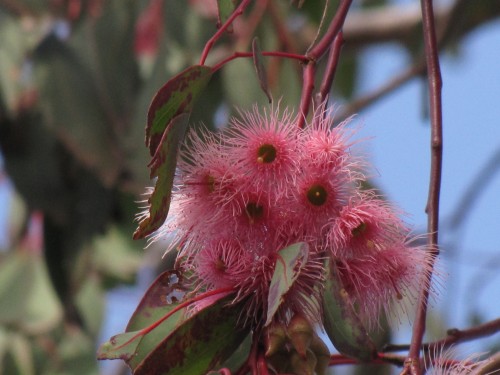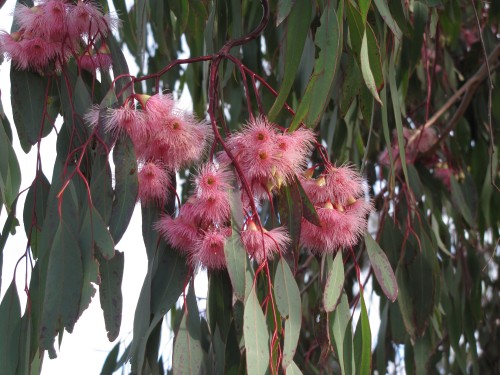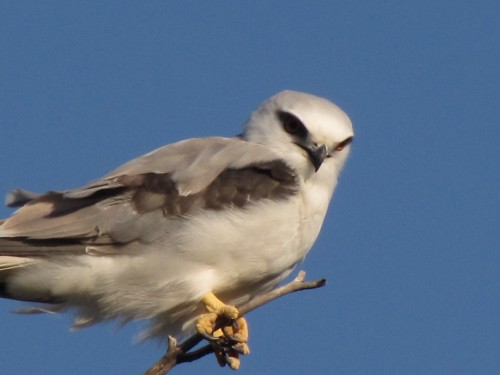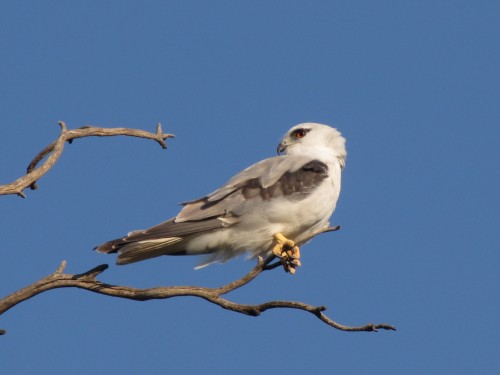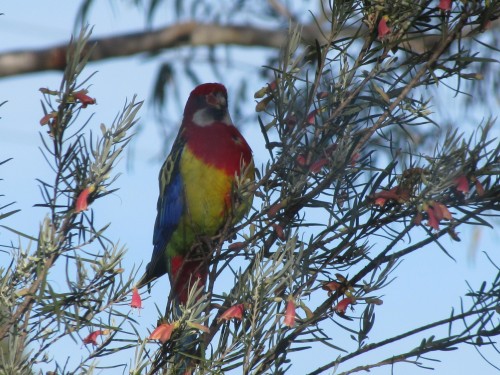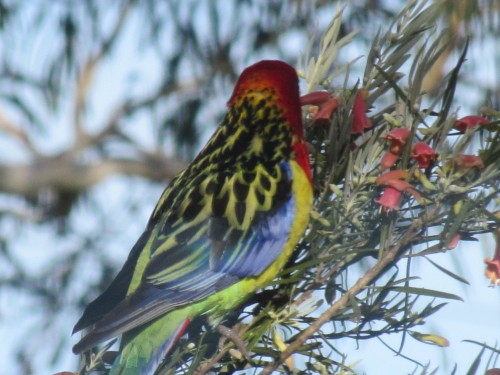Red Wattlebirds and Eucalypts
Red Wattlebirds are one of the largest species of honeyeater in Australia. They are also one of the more common species of honeyeater over their range which is southern Australia.
The Red Wattlebird is a resident breeding species in our garden and on our five acre block of mallee scrub here in Murray Bridge, South Australia. We see them every day and we hear them calling throughout the day. During the warmer days they are frequent visitors to our bird baths, bullying most other species away from the water.
Over recent days we have been observing several wattlebirds feeding on the flowers of the Eucalyptus sideroxylon rosea tree in our drive-way. The common name of the tree is Red Iron-bark. I tried to get a photo of one of them feeding on the flowers but they always flew away before I could sneak up within camera range.
So – instead of getting frustrated by my lack of photos of the feeding birds, I have decided to show some photos of the flowers of the trees for your enjoyment.
Further reading:
Black-shouldered Kite
One of the species we often have visiting our garden, or soaring overhead, is the Black-shouldered Kite, shown in today’s photos. Over recent weeks we have had frequent visits by an individual displaying juvenile plumage. This is not the first time that this species has been observed breeding in the vicinity of our home.
Yesterday’s visit proved fruitful for me. Normally the bird will perch on the dead branch at the top of a mallee tree at the house. This gives it a good view all around. Usually, when I creep outside with my camera it flies off immediately, much to my annoyance and frustration. Yesterday was different; it posed for my camera while I took about 20 photos. Great – especially with the deep blue summer sky as a backdrop.
It wasn’t allowed to perch there unchallenged for long. I noticed that the resident White-plumed honeyeaters were chirping their warnings to all around, and the Red Wattlebird (shown below) was brave enough to actually swoop the kite and snap its beak nearby. Eventually the harassment was too annoying, and the kite flew off.
If you enjoyed this article, you might enjoy reading the following:
- Brown Falcon at Monarto Zoo
- Wedge-tailed eagle overhead
- Black Kite, Mannum
- Surprised by a kite – a humorous encounter with a Yellow-billed Kite in Ethiopia
Get out of my patch
We normally have a few Mallee Ringneck parrots hanging around somewhere on our 5 acre property. In the last few years we have also had one Eastern Rosella keeping them company. We don’t see it every day but frequently enough to keep us happy – after all, it is a handsome looking bird.
This particular parrot has taken a liking to the flowers of several of our Eremophila youngii bushes – you can see the flowers in today’s photos. All the bushes have a pink carpet of flowers surrounding their trunks.
Earlier this week we were enjoying watching the rosella eating while we had our breakfast. A sudden flurry of flapping wings and snapping beaks and the parrot flew off at full speed – its tail closely pursued by an very aggressive Red Wattlebird which in turn was followed by a New Holland Honeyeater.
Both of these honeyeater species spend large proportions of their day also feeding on the flowers, so they seemed to be objecting to this interloper elbowing in on their patch. In reality, while both honeyeater species feed on this bush, neither tolerates the other for more than a few seconds. It is an all out territorial war.
And I forgot to mention that both honeyeater species are in breeding mode, so their tolerance level is at its lowest at this time of the year.
Further reading:
Wattlebirds and grevilleas
Sydney Trip Report June 2011
A few days ago I wrote about our short visit to the Wagga Wagga Botanic Gardens in southern NSW. We were on our way home from holidaying in Sydney with family. These gardens are small but hold a nice range of Australian and exotic plants. It’s also a good spot to get right off the highway, relax with a picnic or a cuppa, and enjoy the range of birds resident in the area.
On this visit I managed to photograph several of the Grevillea species in flower, and while doing so I also captured a Red Wattlebird feeding on one of the bushes (see photo below). It must have been hungry, for the bird almost completely ignored me and my camera only a short distance away. I guess it also needed to stock up on energy for the cold night which was quickly closing in. It had been a bitterly cold day, quite unpleasant for being out and about.
While my prime objective is to photograph our wonderful Australian birds and showcase them here in this site, I also enjoy getting great shots of our native flowers like the Grevilleas. (You can see more photos of flowers, both native and exotic, on my other site, Trevor’s Travels. Click on the Parks and Gardens category or click here.
New Holland Honeyeaters
Last week we went for a short picnic lunch to the Pangarinda Arboretum at Wellington East, South Australia.
The breeze was cool – it is winter after all – but the sun was pleasant if you were out of the wind. While we had our lunch about half a dozen Welcome swallows entertained us by swooping all around. Two of them seemed to be having a race (breeding behaviour?) and as they swept past me they nearly collided with my nose.
While there were plenty of plants already flowering this spot will only come into its own in the coming month of so. Many plants were not yet flowering. Despite that the birds were already busy feeding on those plant that were in flower. The New Holland Honeyeaters, Red Wattlebirds and Singing Honeyeaters were particularly active everywhere through the park. We only stayed several hours but it was a pleasant diversion from the intense writing I have been doing over the last few weeks.
